Nvidia GeForce GTX 960: Maxwell In The Middle
Power Consumption Details
Power Consumption Measurement
We measure the power consumption of the graphics cards just like we described in our foundations story. It’s particularly interesting to see large differences between the relatively well-balanced power consumption during the gaming loop and the comparatively high values during constantly high load. However, these maximums, which are determined by the power target, aren’t really all that relevant, unless the goal is to massively overclock the graphics card. These cards’ sweet spot is somewhere around 80 to 90W, so, naturally, the efficiency for gaming operation with quickly changing loads is the focus.
Since we don’t have access to a reference Nvidia GeForce GTX 960, and the existing tools don’t allow for more than a slight reduction in clock speed, we made the decision to use the Galax GTX 960 EX OC instead. It uses the reference board design and was also the only graphics card that could be “underclocked” all the way to a 1113MHz base frequency. The power target of 120 W fits as well, which means that our measurements should be spot on.
| Model | Idle | Gaming | Torture | Power Target |
|---|---|---|---|---|
| Nvidia GTX 960 Reference (Emulated) | 10W | 85W | 119W | 120W |
| Asus GTX 960 Strix OC | 7W | 100W | 144W | 130W |
| Gainward GTX 960 Phantom OC | 7W | 100W | 133W | 140W |
| Galax/KFA² GTX 960 EX OC | 11W | 90W | 119W | 120W |
| Gigabyte GTX 960 WindForce OC | 11W | 97W | 165W | 160W |
| Gigabyte GTX 960 Gaming G1 | 15W | 108W | 170W | 160W |
| inno3D GTX 960 iChill | 9W | 98W | 162W | 160W |
| Palit GTX 970 Super JetStream | 10W | 108W | 133W | 140W |
Overall, all of the graphics cards post reasonable power consumption numbers. At least this is the case as long as the telemetry in conjunction with the driver can keep up and is able to adjust it to the load fluctuations that occur during gaming.
Problems at the Motherboard Slot
We’ve got to go back to the foundations article mentioned above to put the measurements at separate rails into context. This is because the otherwise very good Asus GTX 960 Strix leaves the motherboard connector to deal with unprecedented unfiltered power spikes all on its own:
For comparison, here’s a look at the Gainward GTX 960 Phantom OC, which presents a much more calm picture, while being almost as fast as the Asus GTX 960 Strix.
The very frequent spikes beyond the motherboard slot’s supposed limit won’t cause immediate damage to the hardware, but there might well be long-term repercussions that are hard to judge now. The same goes for how the system might otherwise be impacted with problems such as “chirping” on-board sound when the mouse is moved. The Asus GTX 960 Strix should do a much better job smoothing these spikes out.
Finally, we’re presenting the detailed measurement results of all the graphics cards we tested in a picture gallery. This provides additional detail for those interested readers who’d like to see a bit more than just a short table with overall numbers.
Get Tom's Hardware's best news and in-depth reviews, straight to your inbox.
Asus GTX 960 Strix

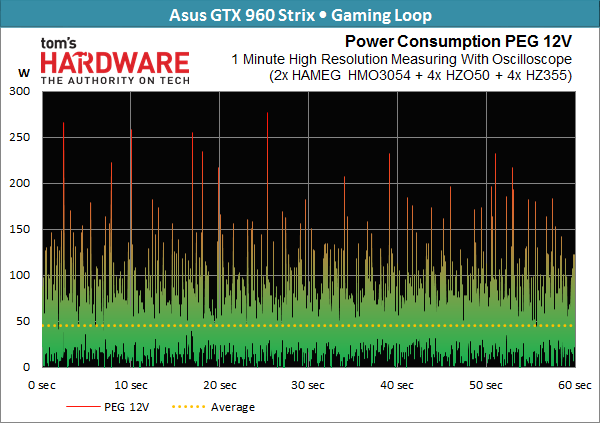
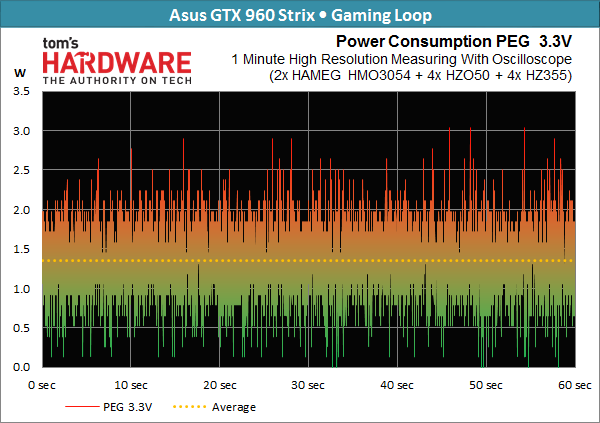
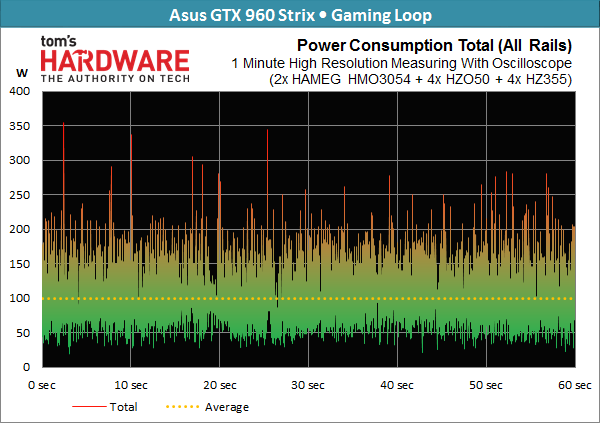
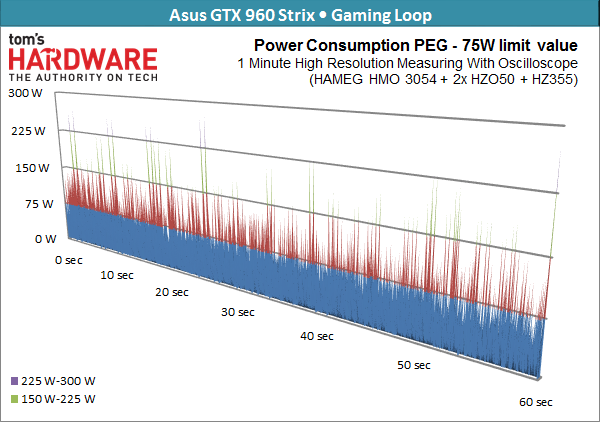
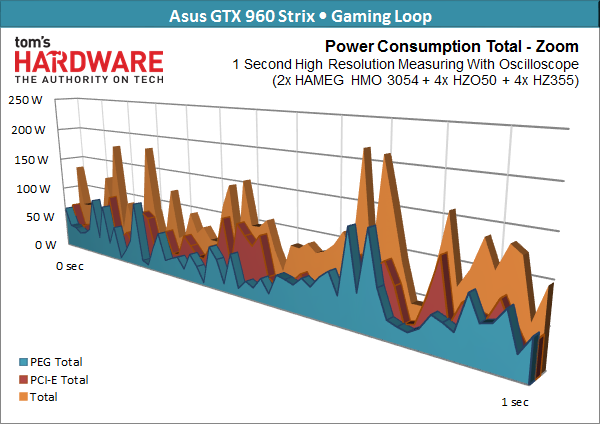
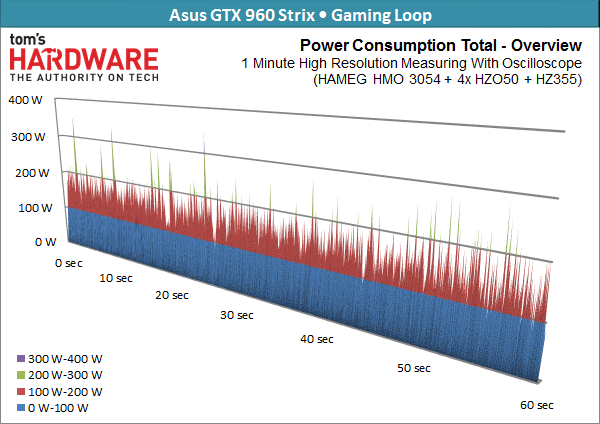
Gainward GTX 960 Phantom OC
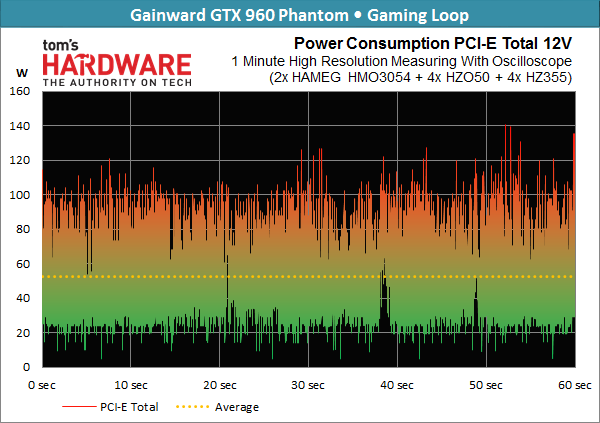
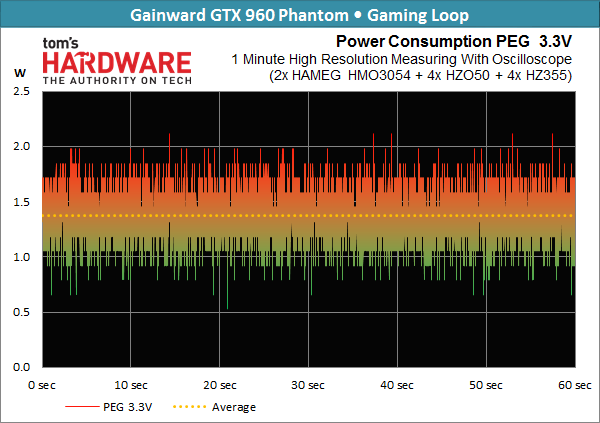
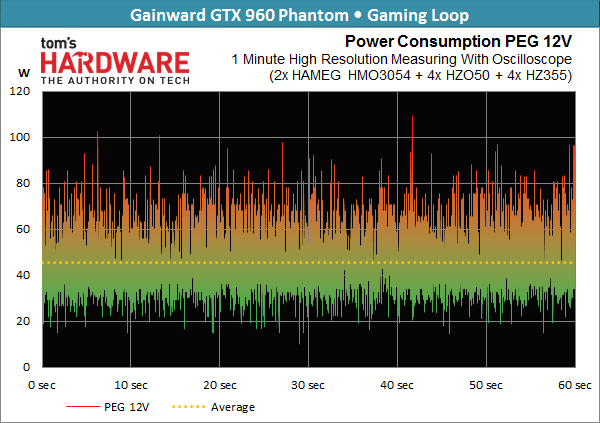
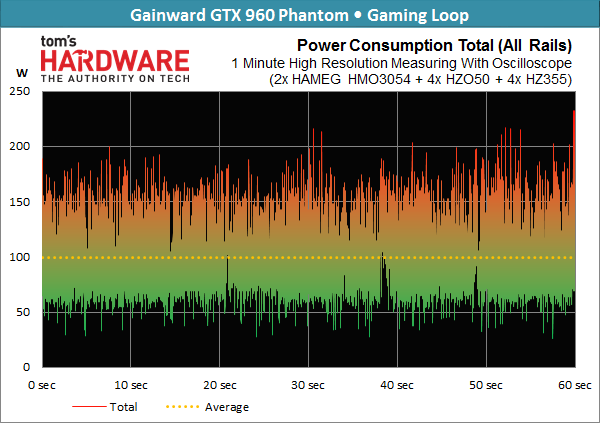
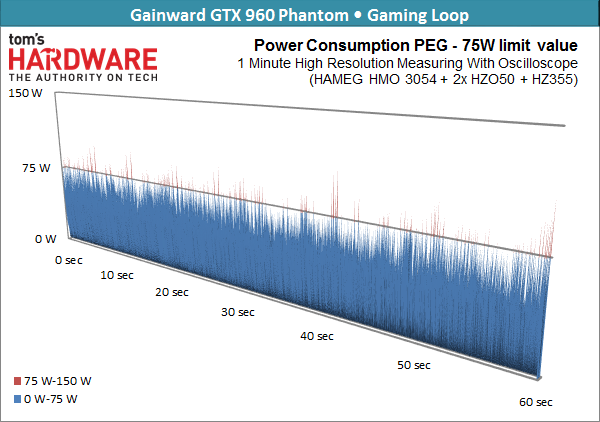
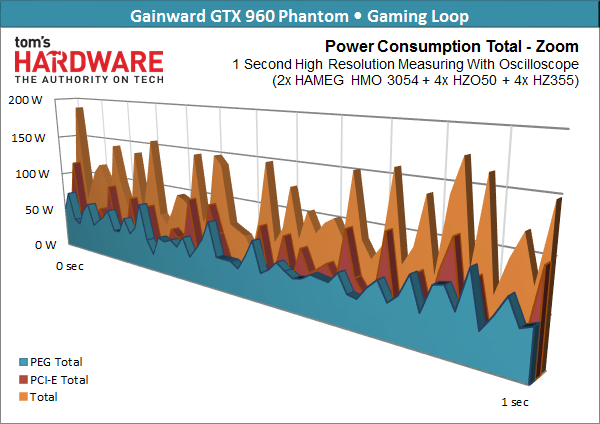
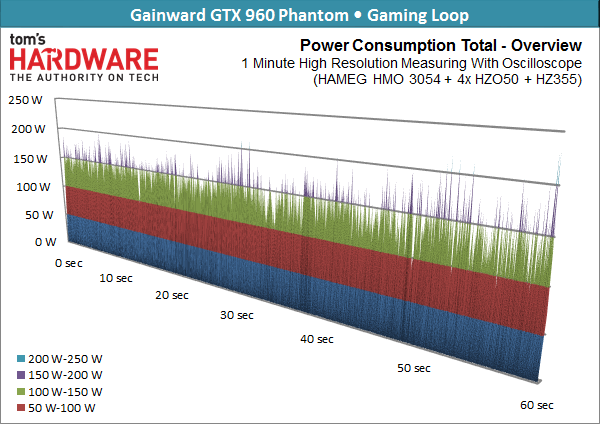
Galax/KFA² GTX 960 EX OC
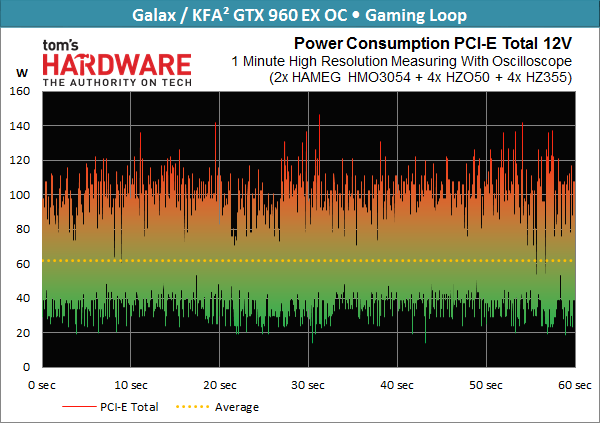
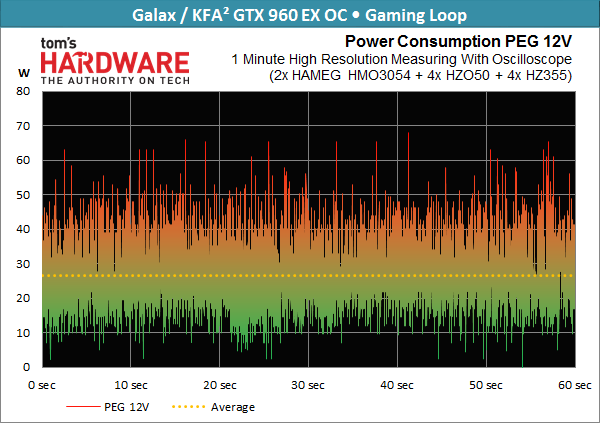
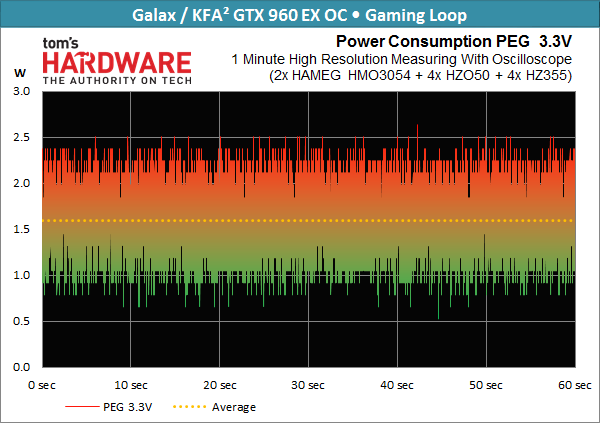
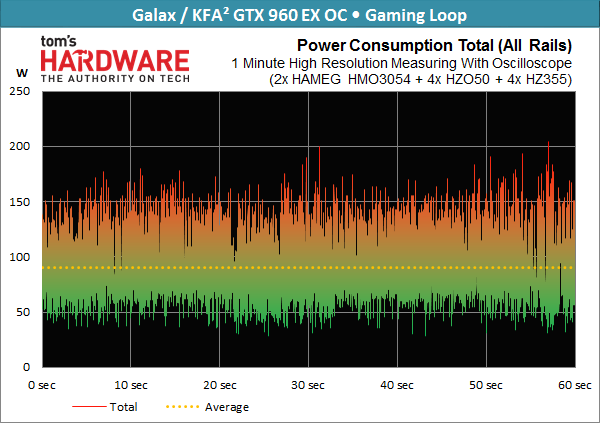
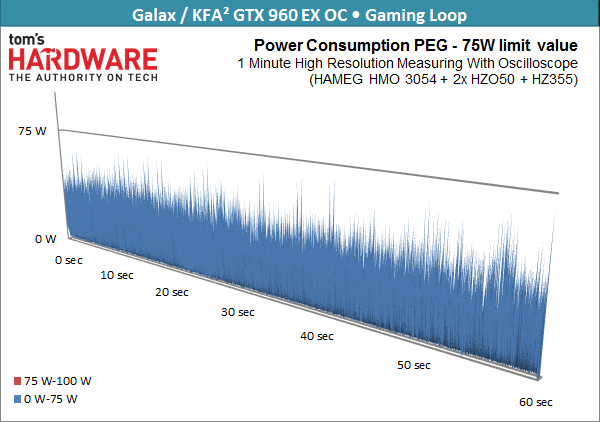
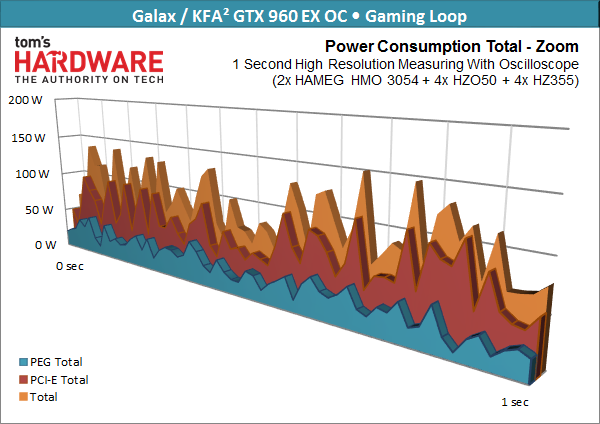
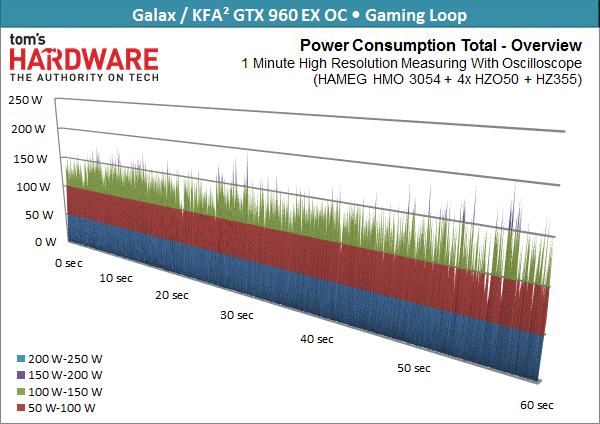
Gigabyte GTX 960 WindForce OC
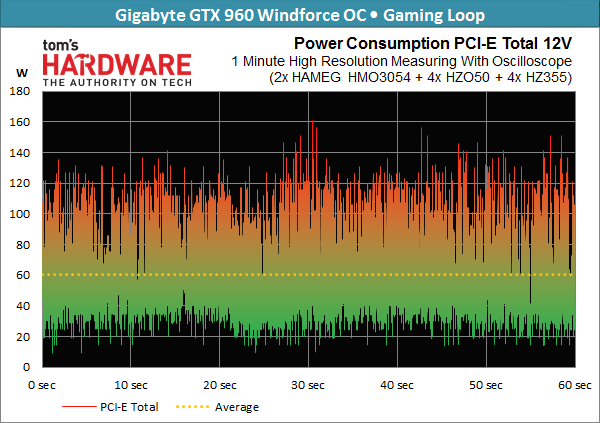
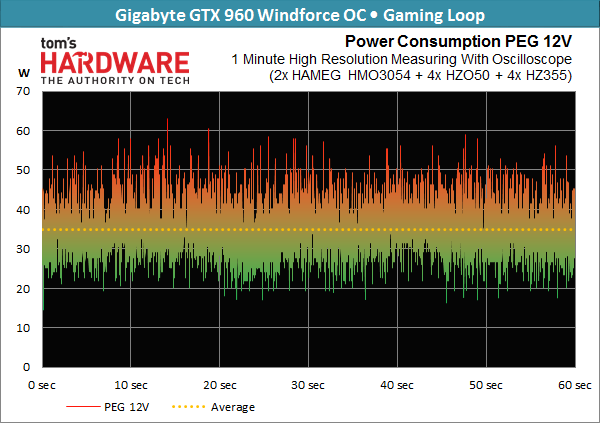
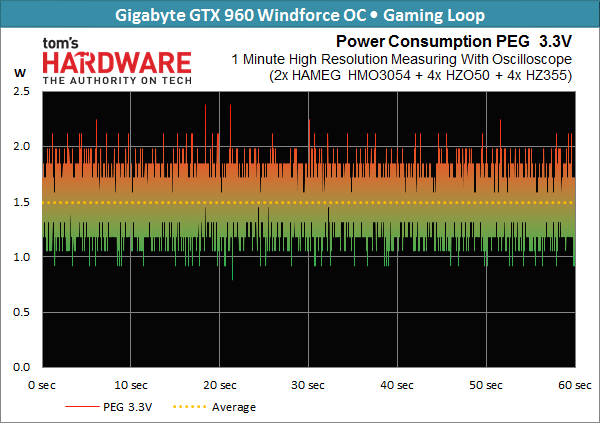
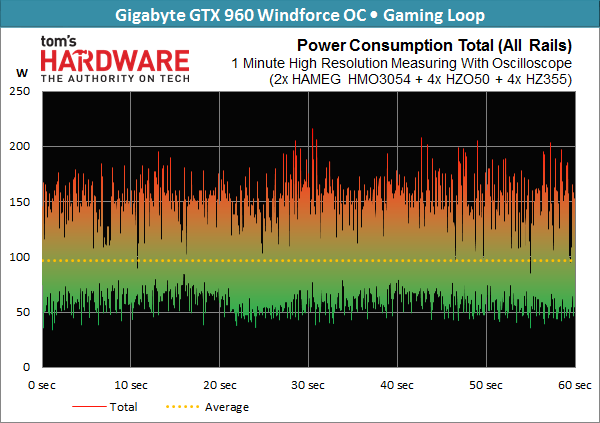
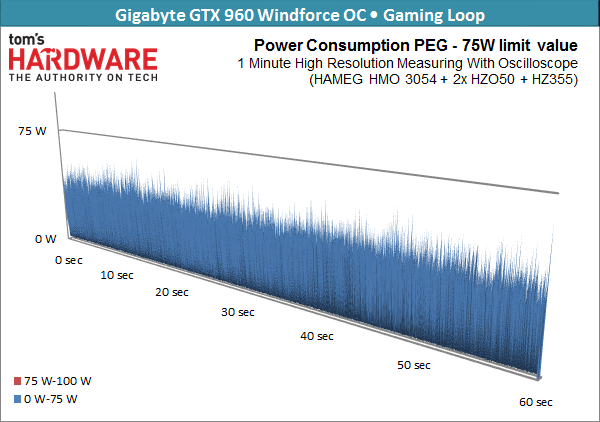
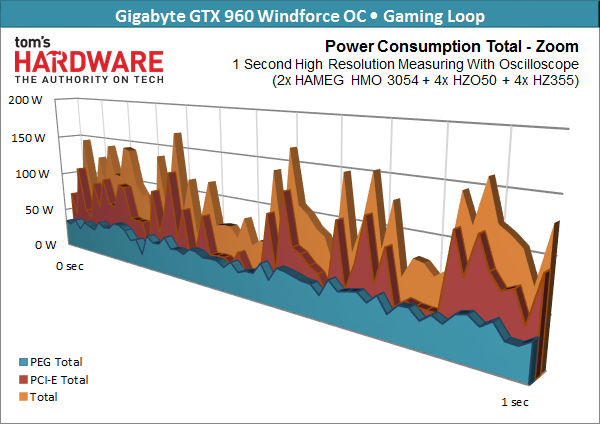
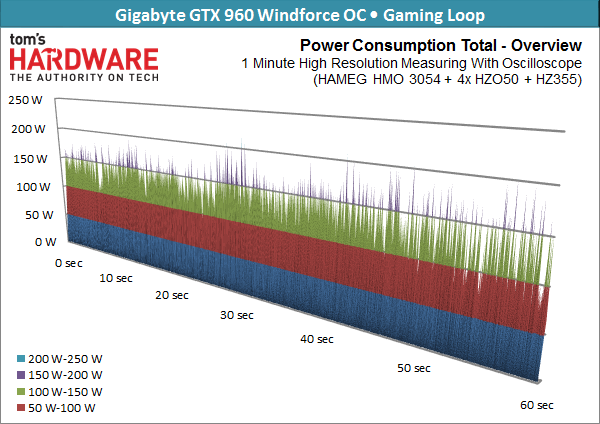
Gigabyte GTX 960 Gaming G1
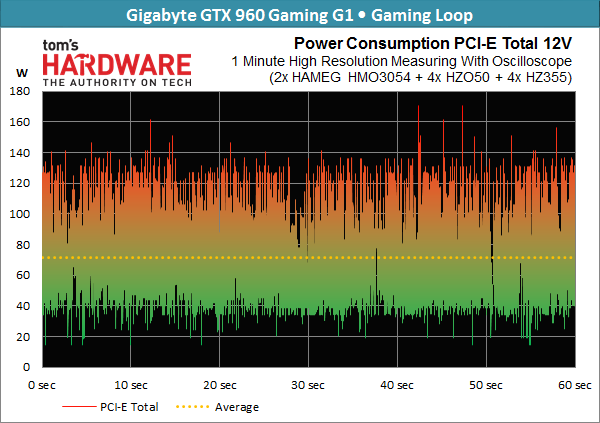
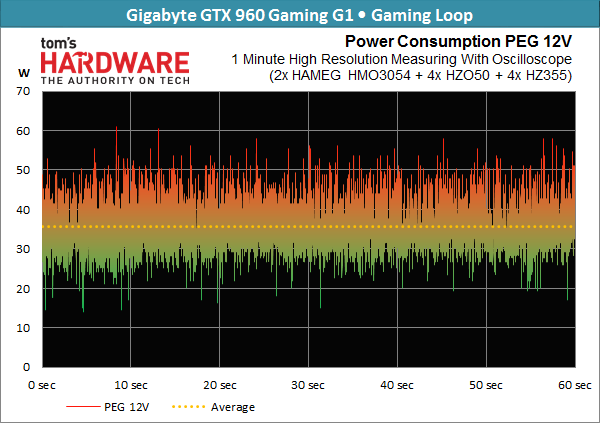
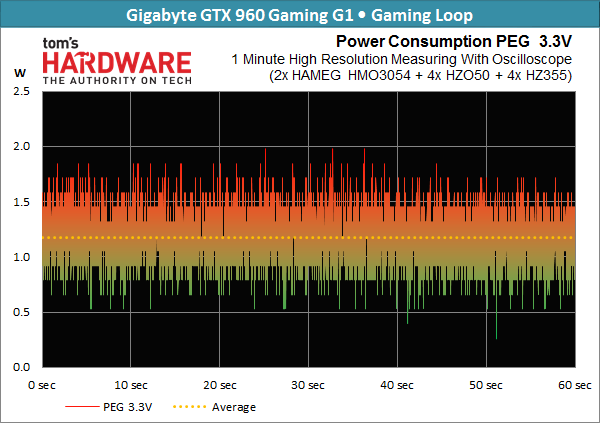
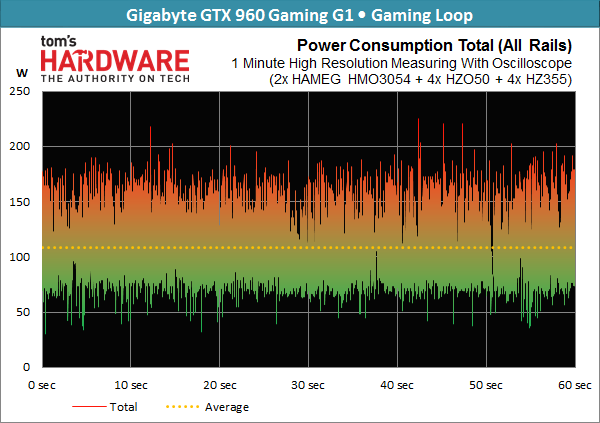
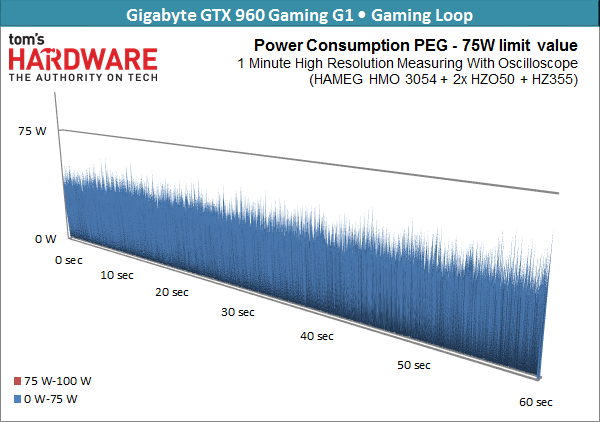
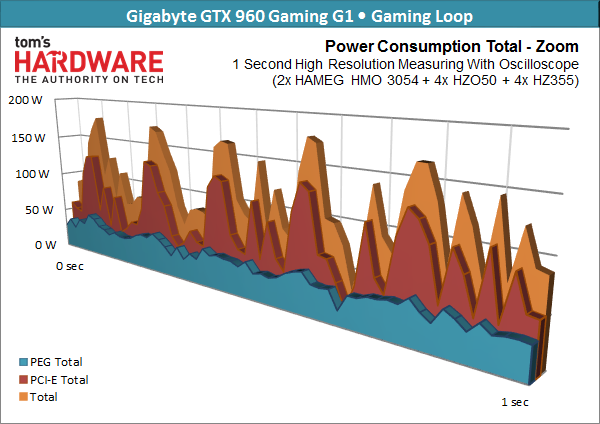
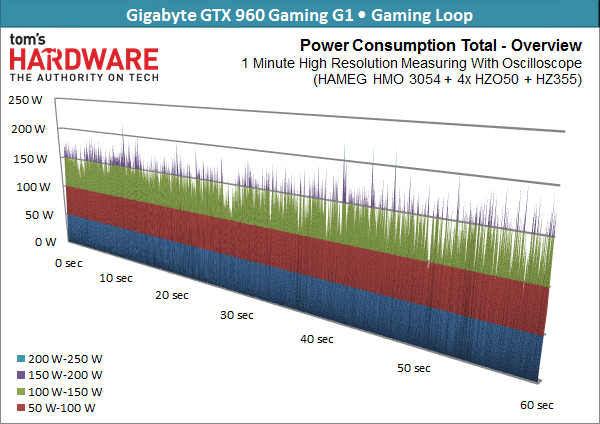
inno3D GTX 960 iChill
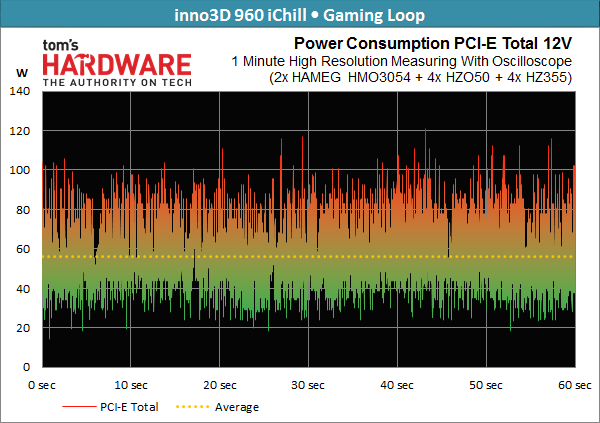
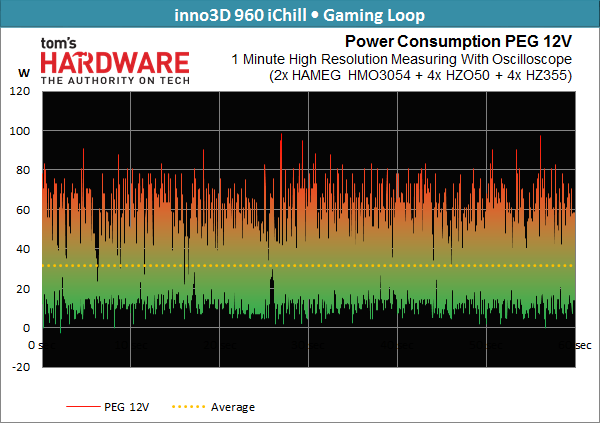
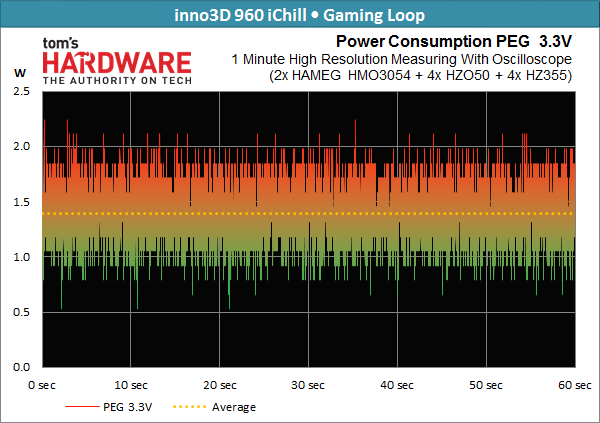
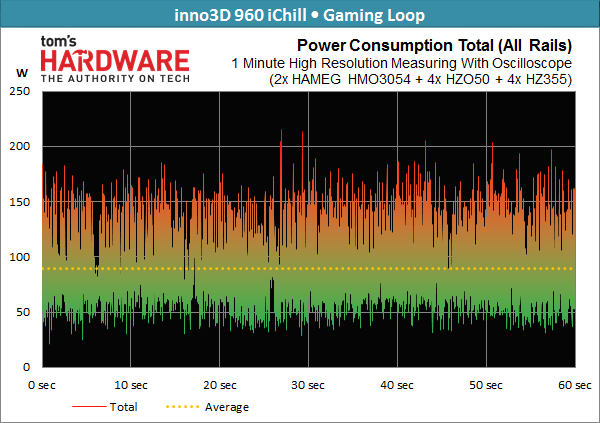
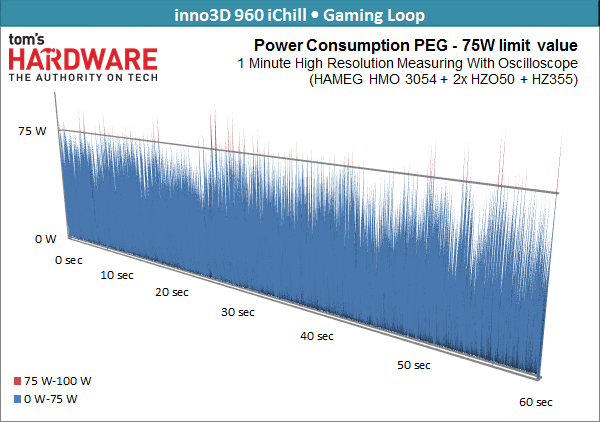
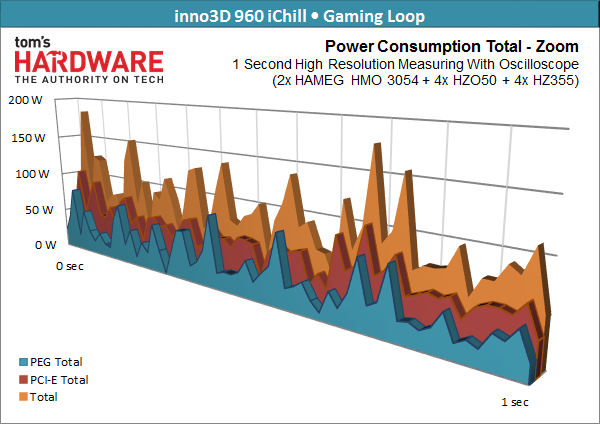
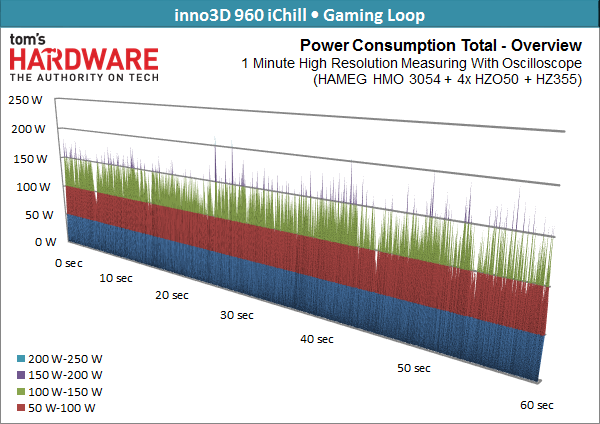
Palit GTX 960 Super JetStream
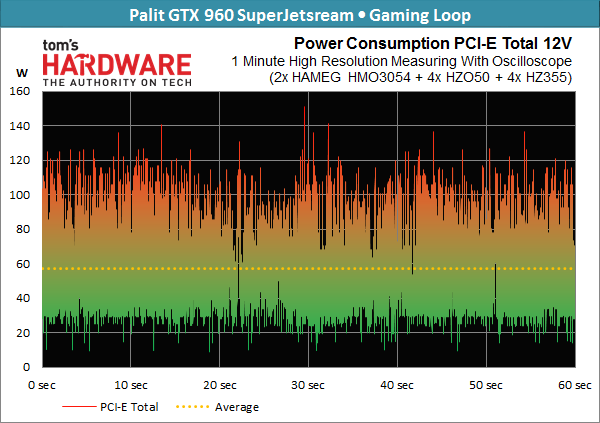
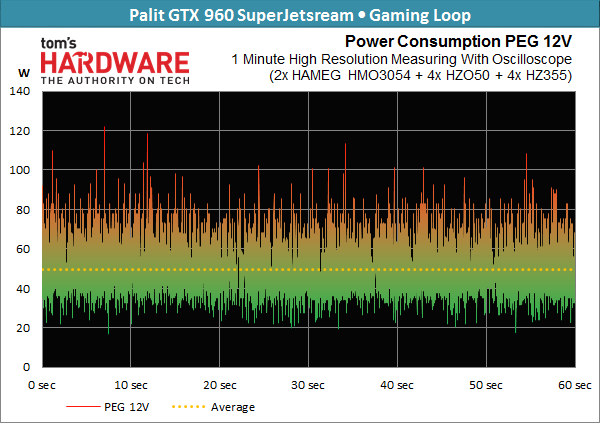
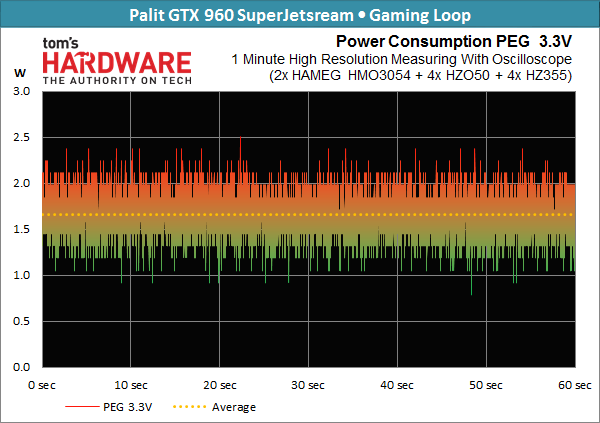
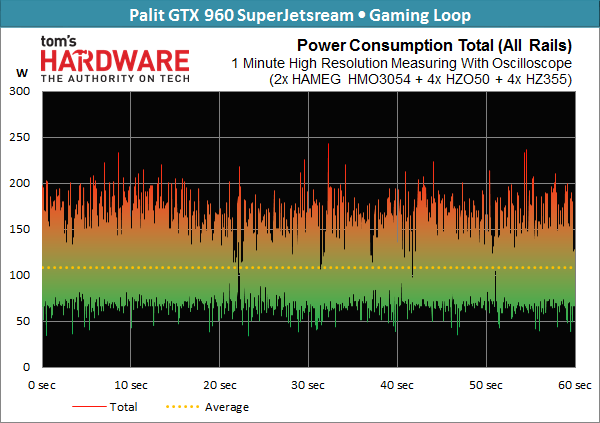
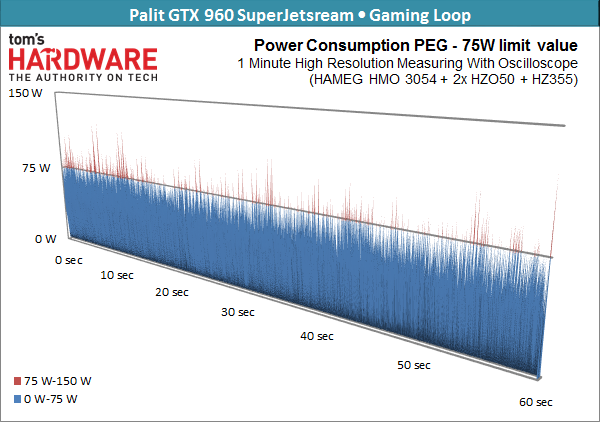
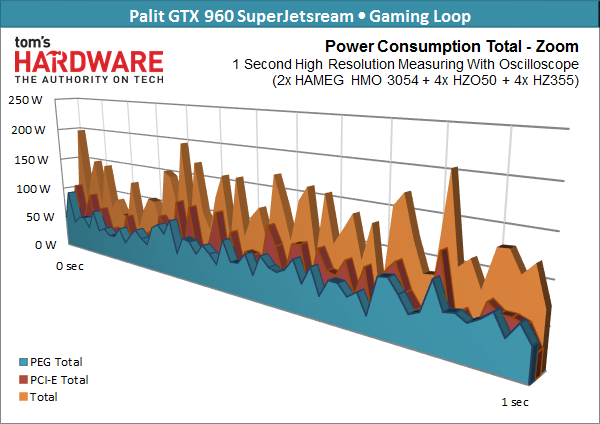
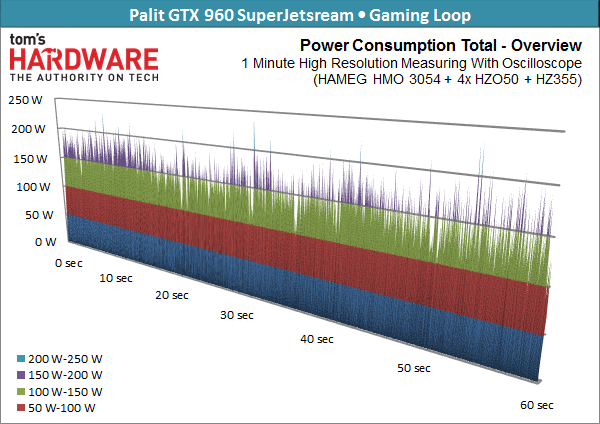
Current page: Power Consumption Details
Prev Page 2D And 3D CAD Performance Next Page Power Consumption Over Three GenerationsDon Woligroski was a former senior hardware editor for Tom's Hardware. He has covered a wide range of PC hardware topics, including CPUs, GPUs, system building, and emerging technologies.
-
Novuake This seems meh... Impressive but not phenomenal power consumption to performance numbers. Especially compared the GTX970/980.Reply
Would have liked to see two more things.
1. More extensive AA. post processing and memory bandwidth testing. Pretty sure Nvidia hamstrung the card a bit in some scenarios with a 1280bit interface. I had to read it 4 times before I believed it and still am skeptical.
2. Overclocking benchies.
So otherwise I guess we are back to the "old" ti-designation setup where the GTX960ti SHOULD be based on GM206 and vanilla GTX960 is not. -
sconzen I may be blind, but I don't see the Zotax Amp! edition in the temperature and noise tests. Confirm?Reply -
damric The R9 280 is the fast and cheap elephant in the room that was never mentioned in this review,Reply -
Grognak Well, I'm not saying a 10% improvement on top of a reduced power consumption isn't nice, because it really is, however we're still quite far away from the 770. I suppose Nvidia has a card planned to fill the massive performance gap between the 960 and 970, one at 4Gb of VRAM maybe?Reply -
sconzen I may be blind, but I don't see the Zotax Amp! edition in the temperature and noise tests. Confirm?Reply -
Novuake Reply15117694 said:The damn arrows are STILL blocking the charts!
I am not the only one! Thank you! -
ykki Novoake, I am very sorry but I stole your comment from an earlier review.Reply
But seriously, those arrows can block out the sun if tom's put 'em right.